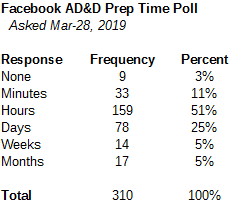The following comes up regularly, and I think that it probably always will; given the incredibly kinked-up nature of the D&D economy, what's the best "correction" to bring it line with some kind of historical pricing basis? Or in other words: very generally, how do D&D costs compare to historical prices?
I'll look at this in three different categories: basic equipment, castle construction, and wages for men-at-arms. My primary resource for historical prices is the Medieval Sourcebook: Medieval Prices (MSMP), compiled by Kenneth Hodges, and currently hosted on a site at
Goucher College. My primary strategy will be to run a linear regression between D&D price and Medieval Sourcebook prices and see if that tells us anything at all consistent.
First: Consider basic equipment. This may be the most tentative of the three classes, because it requires some subjective matching of item types, some of those have widely varying ranges and eras, there are many different possible horses and armor qualifications, almost no historical weapon prices, etc. While the D&D basic equipment list is fairly sizable, and so is the Medieval Sourcebook, there isn't as much overlap as I would have desired. The results are as follows:
As you can see from the chart, these prices are only vaguely linear related (R² = 0.57, moderate correlation). That said: the regression here suggests that if you take D&D price units and treat them, on average, as historically something like
three-quarters of a shilling then you'll be as much in the ballpark as you can be (technically: 76% of a shilling according to this regression; feel free to round to a half-shilling or whole shilling according to taste, any of those could be fine). There's a lot of variation there -- the two outlying high points are the two armor types (mail and plate); those are distinctly undervalued in D&D. The two outlying low points are the prices for the medium war horse and the cart. Also removed from the analysis was the MSMP stated value for a 13th century war horse: "up to L80", which would be 1,600 shillings, far off the upper end of the chart here.
Second: Let's look at castle construction costs. There are a few values in the MSMP (a gatehouse and tower), and I've also found a number of documented costs for castle construction on Wikipedia. You can
see here for the full detail on the first occasion when I looked at that. The displayed D&D prices are dependent on my assessing the constructions in question and pricing them piecemeal according to D&D (a task which I did before looking to convert the historical prices, to try and avoid as much bias as possible):
This regression seems to look a bit more dependable at first appearance (R² = 1.00, apparently perfect correlation). Note, however, that this is largely dependent on what I estimated for the D&D construction of the large Dover castle (an "influential data point"). That said, it has a perhaps surprisingly similar conversion to the basic equipment list above: each D&D "gp" converts to something like a
half shilling (specifically, about 40% of a shilling's value). To me, that seems interesting.
Third: Consider wages for men-at-arms. Now, these values in D&D seem to be at a distinctly different scale than those for other things in the game (basic equipment, castles, treasure, specialists, etc.). Fortunately there are several classifications that seem reasonably easy to compare in D&D and the MSMP:


This also seems reasonably linear in relationship (R² = 0.92, strong correlation). Here if you take the D&D monthly "gp" and multiply by about 5, then you have something in the ballpark of actual medieval costs in shillings -- or in other words, the D&D units for men-at-arms costs are about a quarter of a pound sterling (i.e., roughly the value of an actual gold Noble coin; not something you can say about the units anywhere else in the D&D system).
In summary: With the exception of wages for men-at-arms, the money units in D&D seem to correspond (very roughly!) to historical units of a half shilling or something in that general order of magnitude. For me, it's been a number of years since I started interpreting the D&D price units in terms of historical silver Groat coins (one-third of a shilling each), and I'll probably continue to use that in the near future.
See also: my analysis of Support & Upkeep costs, where in the conclusion, we once again saw the gold piece → silver Groat conversion nicely matches up the OD&D upkeep costs for Name-level fighters with the incomes for real-word Barons and Earls circa 1300.
Download an ODS spreadsheet of the data and regressions seen above here.













